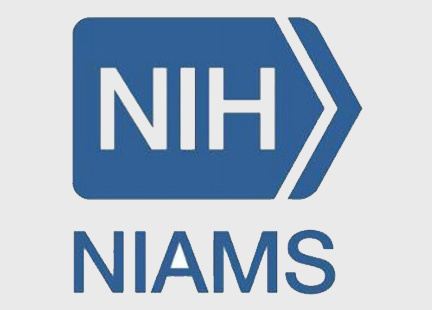
January 2012 (historical)
Researchers at the University of Colorado in Boulder have found that, in embryonic mice, a protein secreted by developing bone signals muscle precursor cells to help bring about a crucial stage of muscle development. During the process, called secondary myogenesis, embryonic precursor cells differentiate and fuse to form muscle mass in the animals’ limbs1. The scientists’ discovery, which involves a protein known as Indian hedgehog (Ihh), also supports the idea that tissues previously thought not to interact through protein signaling do, in fact, communicate with each other. The study was supported, in part, by the National Institute of Arthritis and Musculoskeletal and Skin Diseases (NIAMS), and appeared in the journal Developmental Biology.
Good bone development is known to be accompanied by good muscle development, and muscle and bone cells are also physically close to each other as they grow. Scientists have speculated that protein signaling from bone may be at work in the development of muscle. To test this idea, Bradley Olwin, Ph.D., and his Colorado colleagues examined embryonic mice that lacked the bone-derived Ihh protein, which is normally secreted when secondary myogenesis occurs. They found that the amount of muscle in the limbs of these Ihh-deficient mice was greatly reduced. Since bone cells are the only nearby source of Ihh, Dr. Olwin’s group concluded that those cells must be signaling the muscle precursor cells.
The researchers also sought to determine the role that Ihh plays in successful secondary myogenesis. The protein, they speculated, could affect muscle cell proliferation, differentiation or survival. The investigators found that large numbers of cells died during secondary myogensis in the embryonic mice without Ihh, and the cells failed to express another protein (p21) that allows them to differentiate. Ihh, the researchers concluded, thus contributes to secondary myogenesis by promoting the survival of cells undergoing differentiation through maintenance of p21 protein levels.
Dr. Olwin's work not only expands the role of protein signaling in secondary myogenesis; it also has possible implications for human health. Further studies of bone-to-muscle signaling may yield information related to muscle development and healing following birth.
Partial support for this study was also provided by the National Institute of General Medical Sciences, a component of the National Institutes of Health, and the Muscular Dystrophy Association.
The mission of the National Institute of Arthritis and Musculoskeletal and Skin Diseases (NIAMS), a part of the U.S. Department of Health and Human Services’ National Institutes of Health (NIH), is to support research into the causes, treatment, and prevention of arthritis and musculoskeletal and skin diseases; the training of basic and clinical scientists to carry out this research; and the dissemination of information on research progress in these diseases. For more information about the NIAMS, call the information clearinghouse at (301) 495-4484 or (877) 22-NIAMS (free call) or visit the NIAMS website at https://www.niams.nih.gov.
1 In primary myogenesis, embryonic precursor cells differentiate into embryonic muscle cells that form a scaffold, a "blueprint" for placement and orientation of mature muscle cells.
###
Bren-Mattison Y, Hausburg M, Olwin BB. Growth of limb muscle is dependent on skeletal-derived Indian hedgehog. Dev Bio. 2011 Aug 15; 356(2):486-95. Epub 2011 Jun 13. PMID: 21683695.
